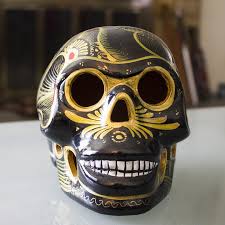
I’ve been a fantasy game player since my college days. In 1979 a fellow resident of Battenfeld Hall at the University of Kansas introduced me to Dungeons and Dragons. That was my freshman year. I left for California and graduate school five years later having graduated to dungeon master and rules smith. I’ve been writing my own rules — up to complete game systems — for 33 years now. I’ve never tried to publish my rules, and that’s not what’s happening here. The role-playing game posts on Dan and Andrew’s Game Place are an attempt to release ideas, hopefully the better and more useful ones, for use in any system.
Today I will take on the topic of the origin of the undead.
The goal of this post is to look for empty spots in the ecosystem of possible types of undead. The undead are a pretty vague group. They are also a huge group. In the more recent incarnations of D&D they have become a category that lets a monster designer cop a bunch of cool immunities and so we have earth elemental undead and similar combinatorial implausibilities. In this post I want to think about how undead come to be and, from that, get a sense of what sorts of powers and capabilities they should probably have. Let’s start categories that can be used to divide the undead into classifications.
- Mindless automaton, mindless berserker, mindful servant of a power, free-willed.
- Corporeal, non-corporeal, non-corporeal with a borrowed material body, non-corporeal but able to manifest a material body.
- Powered by mortal magic, powered by their own will, powered by stolen life-force, powered by residual horror or other emotions, powered by some divine or infernal being, the result of a contagious curse or disease, powered by an infernal curse or divine decree.
- The origin event of the undead is reanimation, a mortal sin like eating human flesh or breaking an oath, escape from an afterlife, summoning from the afterlife by mortal magic, release from an afterlife by a divine or infernal being, a ritual intended to avoid death, or an environmental accident.
- The goal of this undead is a specific mission, mindless memorialization of a tragedy, an addict’s need to get the next hit of blood or life-force, a desire for safety or power (like a human), or to obey or fulfill the will of some master.
These categories cover a lot of the undead and can be stretched to cover most of them. Let’s go through some of the more popular undead from fantasy role playing to check how well these categories work.

Zombie (Automaton) The classic spell Animate Dead gets a dead body up and working for you. It does what it is told, nothing more or less, except that it is not too bright. This is an example of a corporeal, mindless automaton powered by mortal magic arising from reanimation with a goal of obedience to a master. You just tick off the categories. This is an example of an undead that is possibly profane but not clearly evil. It is a meat-robot.
Zombie (Romero) The zombies from Night of the Living Dead are the result of an environmental toxin. They develop a huge craving for “brains!” and so sort of split the difference between mindless berserker and free-willed (this happens more in the sequels). They are corporeal, the result of a contagious “curse” (sort of), and have their origin in an environmental accident. They’re motivation is clearly addicts working toward their next hit.
Deadalive These are characters, bereft of life but animate and with full memory of their past and their talents and abilities. They arise from a dark ritual, typically performed by a necromancers and often against the will of the person being turned undead. The deadness of a deadalive is obvious in their appearance and often their voice and odor. These then are free-willed, corporeal undead, powered by mortal (or sometimes infernal) magic. Another possible origin of a deadalive is the role of revenant, a character that returns to an animate state because of a need for vengeance. Their origin event is a type of re-animation, but rather abrupt — suddenly they are dead but otherwise the same as in life. The goal of a deadalive character depends on the character and how they react to being suddenly dead. Keep in mind that they also look dead which means that their life typically changes a lot. Being undead, the deadalive gain those protections, weaknesses, and abilities common to corporeal undead.
The Harrowed Another zombie-like groups are the harrowed from the gaming system Deadlands. The world of the deadlands system has changed so that evil spirits may re-animate dead bodies, but the original spirit (person) is still in there too and they fight for control. A strong-willed person may have near-complete control of their re-animated body and its new powers. The evil spirit may also end up driving most of the time. These characters are similar to zombies but with added dramatic potential and they check different boxes in the classification. They are split-personality free willed and their goals are their own. They result from a divine curse. Sort of.
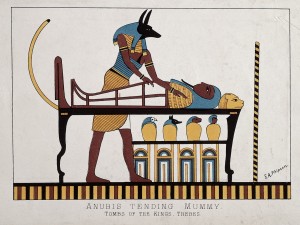
Mummy Mummies are characters that, upon their death, were subject to
a complex ritual that got them moving again. Boris Karloff’s classic movie mummy remembered his life in ancient Egypt and retained his reason, skills, and powers. Other examples of this particular burial ritual create near-mindless tomb guardians. This places them on a continuum from mindless berserker to free-willed, probably powered by their own will with an assist from mortal or infernal magic, they are the result of a ritual intended to (partly) avoid death, and their goal is somewhere between power and safety and the specific mission of tomb guardian. There are several sort of mummy from the groaning curse-of-the-tomb shambler to something difficult to tell from an ancient and skilled sorcerer.
Barrow-Wight Specifically the ones that the hobbits encountered in The Fellowship of the Ring. The creature that the Hobbits encountered on the barrow-downs was a type of mummy, but it was powered by the sorcery of the Witch-King of Angmar a.k.a. the chief Ringwraith that had power flowing directly from an infernal deity, Sauron. The Boris Karloff movie mummy was enabled by the ritual magic of ancient Egyptians, that is to say mortals. The barrow-wight is powered by the black magic of a divinity. This suggests two very different sorts of mummies because the barrow-wight had powers quite different from a typical mummy — and yet it was similar, a tomb guardian resulting from the reanimation of a dead body.
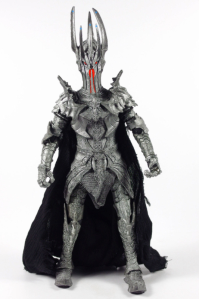
Liches Liches are, in many ways, similar to mummies. The big difference is that they did it to themselves and “died” via a direct transformation into an undead state. Liches are free-willed corporeal undead kept moving by their own dark will. The origin of a lich is in mortal magic (their own) though in some variants they may have aid from infernal powers. They goal is eternal life (well, non-death) and the accumulation of power and knowledge. Because they know they are not more powerful than everyone else put together, they tend to remain covert and many liches are not out to rule the world, but to find the secrets of creation.
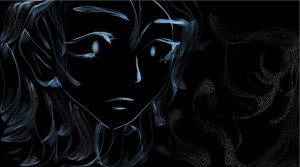
Ghosts There is a lot to cover here. A ghost might simply be a psychic residue of a traumatic event — like a recurring vision which functions as a red herring or a plot device. There are the powerful telekinetic poltergeists, the malevolent creatures from classical D&D, and various spirits trying to resolve issue from their own life. Ghosts range from mindless automaton to free willed. Unless they have a specific power that permits manifestation they are non-corporeal. They are powered by residual horror, infernal magic, or their own will. Their origin is typically a violent, horrible death or a death that leaves a critical obligation hanging. Their goals is typically a desire to set something right or finish something, often with a side-order of vengeance.
A ghost may have the ability to take over or borrow a physical body, making it a material menace and granting it far more scope to deal with the problems it left behind in the world. This sort of possession can be anything from full-blown call-the-exorcist possession to a person simply remembering another life and acting on impulses from it.
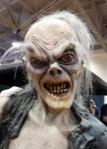
Ghouls Originally a ghoul was just a person that ate human flesh, but in fantasy gaming and horror, eating human flesh has a transformative effect. Ghouls tend to gain some arcane abilities from the transformation, minds that are hard to budge with sleep or enchantment, and toxic claws that cause stiffness and paralysis. This transformation also makes them ageless — they avoid mortal death, while increasing the chance of dying of fire or wounds from edged weapons. A ghoul is free willed, corporeal, and powered by a curse (which might be divine or infernal) on those who would eat human flesh. Their origin is in the sin of anthropophagy and their goal is a desire for ever more human flesh. Ghouls probably span a spectrum from sufficient free will and cleverness to infiltrate human society to near-mindless voracity. One could classify the wendigo as a really powerful type of ghoul. The origin details are similar, but wendigo are typically terrifically more powerful than ghouls.

Wraiths When I first started in playing D&D, wraiths were terrifying because they ate levels and experience. Wraiths are so alien in their attitudes that its hard to tell if they are free-willed, acting in service of some dark lord, or possibly just moving toward and attempting to devour the nearest life-force. In many situations, the actions of a wraith are consistent with all three of these hypothesis and, mostly, this is an issue for individual referees to sort out. Wraiths are non-corporeal, they need to consume life-force to stay healthy, they originate from the infernal regions — summoned or sent from below to trouble the sunlit world. Their goal seems to be some combination of power and safety, juxtaposed with an addict’s need for the life force of living beings. Depending on the particular instance of the rules, someone drained of life by a wraith is an empty husk or gives rise to a new wraith.

Shadows Shadows are like junior wraiths. Their ability to drain life force causes fewer problems, per hit, but is also quite inconvenient. Shadows seem much more likely to be life-force addicts and so functionally berserker automatons. Like wraiths, shadows are non-corporeal and originate from the infernal realms except that they can also reproduce by killing. A person killed by a shadow rises as another shadow in at least some game systems.
Bigger Wraiths Specters, Phantoms, Reaves, and other wraith-like undead are, effectively, bigger, meaner wraiths. Some of them have spell-casting ability, their ability to drain life force is greater, and they are usually harder to kill. These undead, however, fit all the categorical features of wraiths. They often add abilities, an aura of terror, a field of cold, maybe the ability to freeze, paralyze, or knock out opponents.
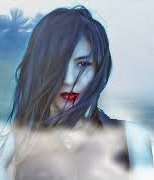
Vampires Vampires have so many flavors that it is hard to keep track, sometimes. Jim Butcher’s Dresden chronicles has three flavors I like: the black, red, and white courts. These are, respectively, traditional Bram Stoker model vampires, blood sucking demonic fiends, and mental parasites that suck out life-force via strong emotions. All of them live by consuming some part or aspect of humans to maintain their power and this is one of the few near-constants in vampires.
Having acknowledged the diversity of this class of undead, lets see how they fit into the categories. Clearly corporeal, vampires have their own free will, unless they are mindful servants of a master like the vampire that created them; this service may be mystically compelled or traditional. Vampires are powered by infernal magic which is transmitted as a contagious curse. The Buffyverse vampires, for example, replace a human’s soul with a demonic spirit — but one with little personality or memory as it becomes a twisted version of the original human. The origin of vampires is typically a simple ritual of being half-eaten by a vampire and picking up the condition from the sire, master, creator, whatever. The goal of vampires splits the difference, to varying degrees, between wanting security and power and an addict’s need for more of whatever keeps them moving; blood, human flesh, life force, emotional energy, and other diverse forms of the essence of their victims.
Bodak The bodak, from D&D, is an adventurer that visited the infernal realms and came back different. A bodak returns with a death-gaze and complete amnesia of their former life. The bodak is a corporeal berserker automaton. Their origin and power are infernal magic of an obscure sort. Their goal is death and chaos — which is probably obedience to the will of their infernal creators. Bodaks are counted as undead because they have lost their previous life and no longer age.
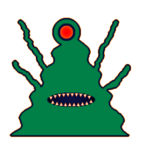
Blob undead This is an idea that has occurred to many people in many forms. Essentially a large pile of dead bodies or dead flesh animates to some degree and becomes like a necromantic version of “the blob”. The variants include amorphous or vaguely anthropic form, one or many orifices, and zero to many, many eyes. While there are a lot of versions of this type of undead, they mostly share the following categorical features. They are mindless or, more accurately, trophic automata looking for flesh or life force. They are aggressively corporeal with little or no spiritual or mental side. They are powered by magic though this may be mortal magic run amok or infernal magic. Their origin may be an obscene ritual or an environmental accident. Their goal is definitely the addict looking for a hit.
New possibilities for undead.
The categorical qualities that are listed in this post suggests new types of undead. It is also possible that some monsters not traditionally in the undead category may be re-classified as being a type of undead. Before making these suggestions I feel a need to remind people and acknowledge a community standard: all ideas are exactly that, ideas, and what a referee chooses to adopt or reject is completely up to them.

Are lycanthropes undead?
Lycanthropy is a contagious curse and no less an authority than Terry Pratchett classified werewolves as being part of the undead community. On the other hand, lycanthropes in literature are often portrayed as being more, not less alive. The classification of lycanthropes as undead also seems a little more palatable for, say, wererats than werewolves or the sometimes heroic werebear. Remember Beorn? So what is the reason for suggesting this notion?
At least in my gaming system, lycanthropy arises from Possession of a character by a tormented animal spirit. A rat left to die in a trap, a wolf wounded and left to die by careless hunters, a bear baited to death for amusement are all situations that could give rise to a tormented spirit. Possession and subsequent formation of a lycanthrope require an additional catalyst. There is a necromantic ritual that opens a character to such possession which, combined with other magic, grants necromancers access to lycanthropes as powerful servants. Or the necromancer may simply unleash lycanthropes in an attempt to create chaos. Wounds inflicted by a lycanthrope in its animalistic form also open a character, until the wounds heal, to such possession. This explains the contagiousness of lycanthropy.
Following this though where it goes, it is possible that a druid might be able to infuse one of his followers with the spirit of a wise, old wolf that died with gray fur and many, many descendants. Similarly, an old bear’s spiritual side might contribute to the power of a guardian of nature. This creates the path to, if not good, at least non-evil lycanthropes.
Nonstandard zombies and other undead
Animated dead are usually derived from the dead bodies of character races. Relaxing this constraint, the idea of getting a dead ogre, or even a dead dragon, moving again gives you a source of mildly to horrendously excessive monsters. This idea can be pushed even farther; a cannibalistic dragon ghoul? A vampire bunny? Let’s stop there before we go too far.
Zombies as ballistic armor. Sort of.
One problem with wraiths and their ilk is that, in a reasonable world, they do not like light and fire. Back in my D&D days, players were really scared of level-draining undead. That meant that our usual response was a hail of fireballs, flaming oil, and anything else incendiary at hand, problem solved, treasure torched, but who cares, we still have all our levels!
As a referee I hit on an interesting notion. A competent necromancer can crank out as many zombies as he needs. Wipe out a small village, get them on their feet again, and viola! cannon-fodder and a cheap work force. Competent player characters can reap these undead like there were ripe wheat. What’s a referee going to do?
My solution was to incorporate into necromancy the ability to summon a wraith (or worse) from the lands beyond death and infuse that spirit into a zombie. The various life-draining and other powers were still available, the zombie has a physical body that is at least normally fire-tolerant, and the resulting corporeal undead is much more dangerous that the sum of its parts.
Secrets Man Was Not Meant to Know!
Using the bodak as an example, characters that have journeyed to the infernal regions, far realms, or the lands beyond death may come back undead and very, very different. Undead of this sort might have any of a large number of abilities, immunities, and odd talents. It is not clear they have to be evil, they may just be agents of divine, or infernal, acation. The possibilities are broad but non-traditional.
Undead plants
A really nasty monster in my gaming system is the anthar. An anthar is an undead tree. It can walk very slowly and whomp really hard with its limbs. The anthar are the result of angry nature spirits in a forest killed by neglect and greed. It is a corporeal, berserker automaton whose origin is an environmental accident and whose goal is revenge against living creatures. It is also susceptible to fire. This is one example from a large potential menagerie of different undead plant monsters.
Other sins, other undead
As noted earlier, ghouls and wendigo originate in the sin of cannibalism. This suggests that mortal sins can lead to novel sorts of undead. There might be a type of undead for each mortal sin or, in a fantasy world, there could be pieties unique to that world that yield undead when violated. Let’s look as some traditional possibilities first.
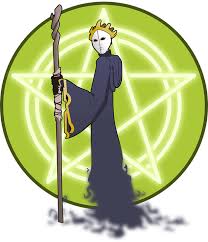
Warlocks
The term warlock has several different usages including a relatively innocuous one meaning male witch. This is not the version I’m using here. A warlock is someone who gains power from breaking an oath, and/or making a bargain. Since breaking an oath is a bad thing, this suggests the power is dark, arising from vile clan customs, a dubious family tradition, or direct contact with infernal powers. The notion, however, is that a warlock is someone who gains dark power through the mortal sin of oath-breaking. Clearly an oath to finish a full keg of beer will not do the trick. A serious oath with ethical and possibly mystic overtones such as loyalty to the throne or vows of poverty, chastity, and obedience are more in the arena. There is also probably a need for a ritual invocation of the dark force that supplies the power. Breaking an oath to the king is a ticket for beheading or exile — getting power from it requires a prior contract, probably signed in blood.
Warlocks may simply gain a slate of useful powers as a result of their dark bargain or their new status may open the door to necromancy, demon lore, or other dark branches of the mystic arts. To qualify as undead, as opposed to just evil bastards, the status as a warlock must set aside natural death in some way. Possibly warlocks can regenerate by the ritual theft of the life-force of other characters or maybe they just stop aging. A dramatic possibility is that a mortal blow restores all their forgone aging, producing a Spielberg-like moment full of withering flesh and bone dust.
There are several possible ways to run warlocks as opponents in a campaign. They might form a secret society that recruits powerful, amoral people with the lure of power. This type of warlock would be backed by the wealthy, knowledge, and resources of something resembling the Illuminati. Alternatively a warlock might be a mad loner with power of diabolical origin working on his own crazed plans for taking over the kingdom or living forever. If warlocks need the life-force of others, in some form, to avoid age or stay powerful then this creates a vulnerability. There is a lot of room here to create your own cool version of this sort of opponent.
Wrathful undead
Wrath or anger is a deadly sin. A character that died in a state of massive, unrepentant wrath might manage to avoid death. Some versions of the Dracula story portray Vlad Tepes transformation as pure refusal to die with overtones of rage and pride. A poltergeist-like spirit might also be rage driven. This means that some of the types of undead already listed originate, at least partly, from the sin of rage.
An ira spiritus is a non-corporeal undead, naturally invisible or translucent, that forms when a character dies in a state of massive rage. This spirit has the ability to posses a living mortal or, possibly, a newly dead body. The resulting creature is driven by the spirit’s rage. While in this state the material creature becomes much harder to hurt, held together by the mystic rage. If the ira spiritus departs then any wounds accrued during its tenure may return. This can create a spectacular and bloody demise for the spirit’s victim.
An ira spiritus can serve as a plot device by returning knowledge from a dead character to a more available status. It might be difficult to get the information in a coherent form, but the enraged ranting of the spirit might well contain clues, nuggets of potentially valuable information.

Undead of an alien piety (an example).
Lantos is a desert realm. Long ago it was a lush paradise, but a misguided mystical war instigated by pride and stupidity left it with a few meager springs and tiny lakes. Bordered by the sea of salt and the mountains of dawn, it is a harsh realm inhabited by a dour and hardy race, the Althenai. What hope the Althenai have arises from their wizards who build great glass houses in which food is raised and water is conserved. The greatest treasure of the Althenai is water of any sort and they quest in the mountains for ice and snow and the deeps of the world for subterranean springs. They dream of a day when they will find the lost water and restore life to their harsh lands.
In Lantos, wasting water for any reason, is a sin. The wizards of the Althenai long ago performed a great ritual that transforms anyone who wastes water knowingly and with enjoyment. These individuals are called Harenae. The effect of the curse is to both dehydrate and preserve the victim. Harenae live until burned to ash or chopped to bits. They appear as desiccated, animate corpses. Their withered flesh is as hard as armor and they have sharp claws. Over time they gradually learn a magic that lets them shape and control sand into crude fortifications and even bolts that can hammer an opponent.
Harenae, even new ones, can suck the water from other characters by touch. This is often fatal and briefly restores a Harenae to their original appearance. Contrition and immersion is a lake of pure water can restore a repentant Harenae, but both repentance and lakes are rare. Once restored, the character ages to match its chronological age. Harenae that are old enough to have gained the ability to command sand typically fall to dust and a few bone fragments if restored.
The powers gained by the Harenae as they age were not foreseen by the wizards that created the curse, but the value of the curse’s threat and the great difficulty of reversing it mean that the wizards of Lantos do not contemplate undoing the ritual. Until they do the wastes of Lantos are made even more harsh by these wandering undead.
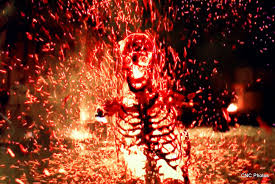
A final note: remember that undead usually have a weakness.
This is just a small note to remind you, if you’re a new referee, that any monster needs to have some way clever players can beat it. Anthar, the undead trees in my gaming system, are flammable — they not only take damage from fire but they keep taking damage from fire. A fireball sets them on fire and they keep taking damage until they stagger to a river or fall to ash.
Vampires are the poster child for vulnerabilities. They must be invited in, they have cross-phobia, some posses a garlic allergy, most have an inability to tolerate sunlight, vampires cannot enter consecrated ground, on an on, in various traditions.
The Harenae of Lantos can be deprived of their armor and claws, temporarily, by re-hydrating them. This is difficult in the dry realm of Lantos, but possible. Some Lantosian fortresses have water traps that can dump water through a hatch in the roof of an entry corridor, for example.
There are some ideas: go wild
The other deadly sins, besides rage, are gluttony, lust, greed, pride, despair, vanity, and sloth. Some of these lead to new types of undead more rapidly than others, but most of them appear somewhere. An undead that arises from the sin of vanity seems an odd idea at first — but imagine a creature that stays young and beautiful by stealing the youth and beauty of others. Gluttony implies a creature that cannot stop eating like the famine spirit from D&D. The other sins are left to our readers as chances to exercise their imaginations.
If you have have a fantasy campaign in a unique and interesting setting, undead with origin stories like the Harenae might fit in. Find a societal imperative, think about which violations of it are sins, and see if this suggests a natural type of undead. They is room here for both original thought and comedy.
Remember also that while the undead are commonly evil, there is the potential for mission-directed undead that is otherwise a non-evil character. There may even be good spirits that return and yet are functionally undead of some sort.
This is Dan of Dan and Andrew’s Game Place. Let me know what you think about this post in the comments. If you get ideas from this, gives us a pointer!
